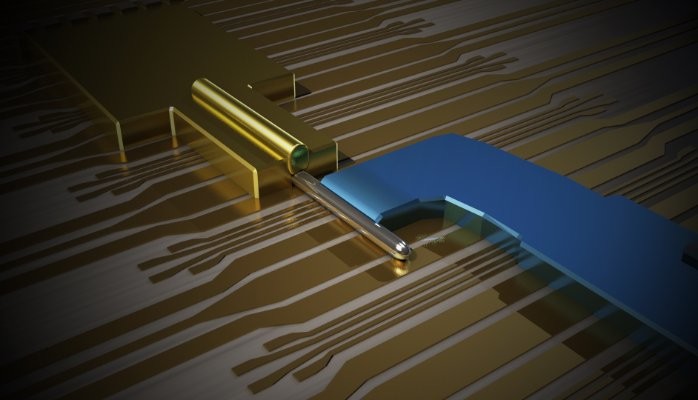Majorana fermions represent a compelling realm of study within theoretical and condensed matter physics, arising from concepts that traverse both particle physics and material science. These exotic quasiparticles are predicted to exist as zero-energy states in certain solid-state systems, and they possess unique properties that make them indispensable in the pursuit of fault-tolerant quantum computing. The objective of this discourse is to elucidate the mechanisms by which Majorana fermions can be detected in nanowires, the significance of their discovery, and the experimental frameworks that underpin these explorations.
The theoretical groundwork for Majorana fermions was laid in the 1930s by the physicist Ettore Majorana, who suggested the possibility of a particle that is its own antiparticle. Such properties lead to an intriguing prediction that Majorana modes can emerge in specific condensed matter systems, particularly in topologically nontrivial phases. Notably, nanowires infused with strong spin-orbit coupling and proximity-coupled to superconductors have garnered significant attention. These systems exhibit topological superconductivity, a state that is crucial for the realization of Majorana bound states. The formation of such states occurs when the system undergoes a topological phase transition, a phenomenon typically characterized by a change in the system’s global topology.
Understanding spin-orbit coupling is paramount. Spin-orbit coupling is a relativistic effect that arises from the interaction between a particle’s spin and its orbital motion. In nanowires, particularly those composed of materials like indium arsenide (InAs) or silicon, this coupling can induce a significant spin texture, which is critical for achieving Majorana fermions. When these nanowires are aligned within a magnetic field and placed in contact with a superconductor, the competing interactions can yield conditions conducive to the emergence of Majorana states.
The detection of Majorana fermions necessitates sophisticated experimental protocols. One of the foremost techniques employed is transport spectroscopy, which examines the electrical conductance of the nanowire. At low temperatures, Majorana bound states are theorized to influence the conductance in a manner that reveals themselves as quantized plateaus in the differential conductance as a function of bias voltage. Such features are expected to manifest as robust peaks at zero-bias in the conductance spectrum, attributed to the presence of zero-energy states localized at the ends of the nanowire.
Additionally, tunneling spectroscopy serves as another pivotal method for investigating these quasiparticles. Here, a scanning tunneling microscope (STM) can probe the local density of states and provide insights into the existence of Majorana modes. The interaction of the STM tip with the nanowire allows researchers to extract information about energy levels, revealing signatures of Majorana fermions through characteristic peaks within the density of states at zero energy. This approach emphasizes the necessity for high spatial resolution and a meticulous analysis of the resulting spectra.
Moreover, braiding operations present an innovative avenue for the experimental verification of Majorana fermions. The non-Abelian statistics of Majorana modes allow for the implementation of quantum gates essential for quantum computation. This method involves braiding multiple Majorana bound states, and the resulting exchange interaction can lead to a change in the quantum state that is topologically protected from certain errors. Demonstrating the braiding of Majorana fermions could decisively establish their identity and usability in quantum computing architectures.
A critical aspect of current research entails the quest for robust Majorana modes that are stable against local perturbations, particularly in non-ideal conditions that resemble real-world applications. Several experiments have been conducted that report the signatures of Majorana states, including those conducted on InAs nanowires coupled to superconductors that exhibit zero-bias conductance peaks. However, distinguishing these peaks from trivial Andreev bound states remains a challenge within the field, raising questions regarding the reproducibility and reliability of results. Rigorous criteria are thus necessary to confirm the presence of Majorana fermions, including parameters such as the robustness of the zero-bias peak against varying magnetic fields and the nonlocality of the modes.
Furthermore, the theoretical modeling of these experimental systems is critical, as it provides an underpinning for interpreting observed phenomena. Employing advanced numerical techniques and simulations, available data can be analyzed to predict the behavior of Majorana states under various conditions. These models play a vital role in guiding experimental setups and optimizing parameters for potential detection.
In conclusion, the discovery of Majorana fermions in nanowires not only holds promise for enhancing our fundamental understanding of quantum mechanics but also lays the groundwork for revolutionary advancements in quantum computing technologies. As experimental techniques continue to evolve and theoretical frameworks become more sophisticated, the quest for well-defined Majorana states progresses, ultimately driving advancements in material science and quantum information. Ongoing research endeavors will undoubtedly illuminate further intricacies of these fascinating quasiparticles, potentially leading to groundbreaking applications in the burgeoning field of quantum technology.












